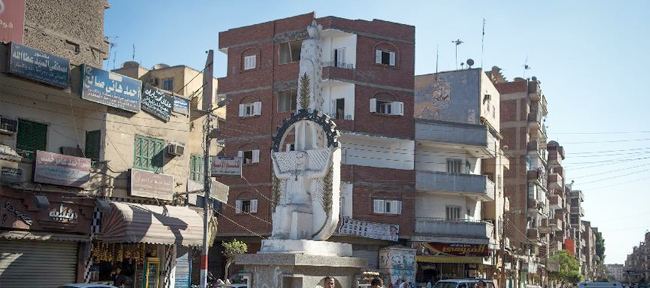Country Egypt Area 2,543.03 km2 | ||
 | ||
Colleges and Universities Menoufia University, University of Sadat City | ||
Capital Shibin Al Kawm, Al Minufiyah | ||
Map of Monufia Governorate
Monufia Governorate (Egyptian Arabic: محافظة المنوفية Muḥāfẓet El Monofeya [elmenoˈfejjæ, -monoˈ-]) is one of the governorates of Egypt. It is located in the northern part of the country in the Nile Delta, to the south of Gharbia governorate and to the north of Cairo. The governorate is named after Menouf, an ancient city which was the capital of the governorate until 1826. The current governor is doctor Ashraf Helal.
Contents
- Map of Monufia Governorate
- Population
- Cities
- Industrial zones
- History
- Agriculture
- Notable residents
- Projects
- References

Population
According to population estimates from 2015 the majority of residents in the governorate live in rural areas, with an urbanization rate of only 20.6%. Out of an estimated 3,941,293 people residing in the governorate, 3,128,460 people live in rural areas as opposed to only 812,833 in urban areas.
Cities
The capital of the Monufia Governorate is the city of Shibin El Kom. The main cities of the governorate are Quesna, Tala, Bagour, Menouf, Ashmoun and Sers El Lyan. It is a mainly an agricultural governorate.
Industrial zones
According to the Egyptian Governing Authority for Investment and Free Zones (GAFI), in affiliation with the Ministry of Investment (MOI), the following industrial zones are located in this governorate:
History
In 1826 Mohammed Ali transferred the capital of Monufia from Menouf to Shibin El Kom as the later fell exactly in the center of the governorate. Other than Shibin El Kom, the governorate had four other administrative divisions which are Quesna, Tala, Menouf and Ashmoun. In 1942, El Shohada became a new administrative division and included parts from Shibin El Kom and Tala. In 1947, Bagour was created to encompass regions from Menouf, Ashmoun, Quesna and Shibin El Kom. In 1955, five villages were taken from Tala and redistributed to Tanta. in 1960, Berket El Sabe'e (Lake of the Lion) was established and consisted of former towns and villages of Tala, Quesna and Shibin El Kom. In 1975, Sers El Lyan became a city rather than a village after it was separated from Menouf. In 1991, the Sadat City was annexed to Monufia being its only region west of the Rosetta branch. In the final round of the 2012 Egyptian presidential election, Monufia had the highest voter turnout rate of all governorates (61.5%) as well as the most overwhelming support for candidate Ahmed Shafik (71.5%).
Agriculture
The governorate is famous for the production of crops like cotton, maize and wheat as well as vegetable crops such as potatoes and green beans of which a large part is exported. Agricultural land is irrigated with water from the Rosetta and Damietta branches of the Nile. Agriculture is generally the main activity of the population due to the fertile land in the Nile Delta.
Notable residents
Monufia Governorate is particularly known for being the birthplace of two Egyptian presidents, Anwar Sadat (1918–1981), born in Mit Abu El Kom and Hosni Mubarak (1928-), born in Kafr El Meselha.
Projects
In 1981, the Basic Village Service Program (BVS), under the auspices of USAID, had several water, road, and other projects, going on in several markazes in the Monufia Governorate.
